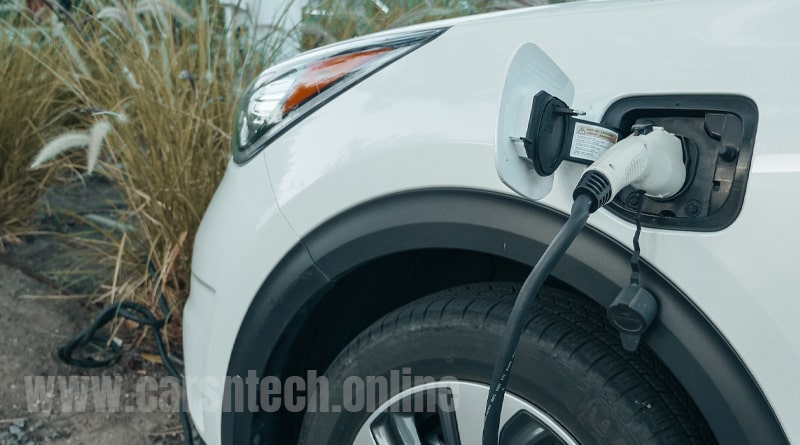Unlocking the Secrets: Your Ultimate Guide to Finding and Acquiring Used Electric Vehicles (EVs)
A few years back, electric vehicles (EVs) were overlooked by dealers who struggled to move them off the lots. Fast forward to today, and the scenario has flipped drastically. The surging gas prices have propelled used EVs into the limelight, triggering a fervent demand that’s driving the market. Yet, this surge in demand comes hand in hand with a scarcity of supply, compounded by a historical lack of market penetration for EVs. The global supply chain interruptions that have disrupted the availability of new cars have also played their part in driving up used car prices, including EVs.
The Changing Landscape of EV Prices
Gone are the days when used EVs could be acquired at a bargain. In the past, shoppers would seek out markets with the lowest markup, but times have changed. The advice now is to tread the used car market cautiously, especially in the realm of used EVs. Unlike the conventional internal combustion engine market that boasts a more robust supply, the limited availability of used EVs has driven prices skyward.
Sam Abuelsamid, a respected industry analyst and EV specialist points out, “There’s not a lot of availability, so prices for the used EVs that are there are going to be higher, just as with the new-car market.”
The average prices of used EVs have skyrocketed by over 25% in the last year, as reported by Scott Case, the CEO of Recurrent, a battery health solutions provider. This surge in prices is even more pronounced in the case of popular models such as Tesla’s range, which constitute a significant chunk of both new and used EV sales.
Carvana, a prominent online car seller, reflects this trend with its listing statistics. A mere handful of EVs were up for grabs in June, with 90% of them labeled as “purchase pending.” This scarcity extends to the broader used car market, with only a limited number of options available.
Factors influencing EV prices
Battery technology advancements
The cost of EV batteries plays a crucial role in determining vehicle prices. As battery technology advances, manufacturers can produce batteries with higher energy density and lower production costs, driving down the overall cost of EVs.
Government subsidies and incentives
Many governments offer subsidies, tax credits, and other incentives to encourage consumers to purchase EVs. These incentives can significantly reduce the upfront cost of EVs, making them more affordable for consumers.
Manufacturing costs
The economies of scale achieved through mass production can lower manufacturing costs, allowing manufacturers to offer EVs at competitive prices. Streamlined production processes and efficient supply chains also contribute to cost savings.
Historical trends in EV pricing
The early years of EVs were characterized by high prices due to limited battery technology and production volumes. However, as technology improved and demand increased, prices began to decline, making EVs more accessible to a broader range of consumers.
Competition among EV manufacturers drives innovation and price competitiveness. As more automakers enter the EV market, consumers benefit from a wider selection of models at various price points, driving down prices overall. Supply chain disruptions, such as shortages of raw materials or components, can affect EV prices by increasing manufacturing costs or causing production delays. These disruptions highlight the importance of resilient and diversified supply chains in maintaining price stability. Consumer demand for EVs continues to rise as awareness of environmental issues grows and the availability of charging infrastructure expands. However, affordability remains a key consideration for many potential buyers, particularly in lower-income brackets.
EV prices vary significantly across different regions due to factors such as government policies, local market conditions, and infrastructure development. While some countries offer generous incentives to promote EV adoption, others face challenges in making EVs accessible to the masses. As technology continues to advance and production volumes increase, experts predict further reductions in EV prices in the coming years. However, the pace of price decline may vary depending on factors such as regulatory changes, technological breakthroughs, and market dynamics. While EVs offer significant environmental benefits compared to gasoline-powered vehicles, their upfront costs can still be prohibitive for some consumers. However, when considering the total cost of ownership, including fuel savings and maintenance expenses, EVs often prove to be more cost-effective in the long run.
Despite the downward trend in EV prices, several challenges remain in making EVs more affordable for the mass market. These include high battery costs, limited charging infrastructure, and consumer perceptions regarding EV performance and range. Automakers are continually innovating to develop cost-effective EV models that appeal to a broader range of consumers. These innovations include advancements in battery technology, lightweight materials, and streamlined production processes. Consumer preferences, such as vehicle size, range, and features, can influence EV pricing strategies. Automakers must balance affordability with consumer demand for advanced technology and premium features. To address affordability concerns, stakeholders in the EV industry are exploring various strategies, including research and development investments, supply chain optimizations, and collaborations with government agencies and industry partners. Accessible EV prices have far-reaching societal implications, including reduced greenhouse gas emissions, improved air quality, and energy independence. By making EVs more affordable, we can accelerate the transition to a cleaner and more sustainable transportation system.
A Dearth in Availability
The dawn of the modern electric car era can be traced back to the launch of Nissan’s Leaf around 12 years ago. However, for most of the following decade, EVs remained in the shadows, appealing only to a niche market in states that embraced the environmental and economic advantages of EVs.
Quantifying the exact number of used EVs in the market proves challenging due to the fluid nature of supply and the lack of tracking for private seller listings. Nonetheless, data indicates that between 15,000 and 20,000 used EVs were available on average across the U.S. during the first half of 2022. This pales in comparison to the average monthly sales of 3.4 million used cars in 2021.
The distribution of available used EVs poses another challenge. A substantial portion of the available supply is concentrated in states like California, Florida, and New York, which have championed the adoption of EVs. Compounding the problem is the reluctance of existing EV owners to part with their vehicles amidst high gas prices and vehicle shortages. Consequently, the number of used EVs remains a fraction of the potential supply.
While the number of available EV models has grown significantly, with over 100 models projected by 2030, the current number falls far short. Currently, there are approximately 1.6 million fully electric vehicles on the road, accounting for just a fraction of the total registered vehicles.
Battling Inflation
The inflation of gasoline prices, coupled with expectations of continued highs, has propelled the already inflated used EV prices even higher. The price surge for used EVs has outstripped the overall inflation rate by threefold, which currently stands at around 8.5%.
To illustrate the impact, let’s take a look at snapshots from the market:
- A 2018 Nissan Leaf SV with under 30,000 miles in Southern California averaged around $20,000 at the close of 2019. Now, the same model, with comparable mileage, commands around $25,000.
- The average price for range-extended BMW i3s of the same vintage and mileage hovered around $20,000 at the close of 2019. However, CarMax, a prominent car retailer, recently listed a 2018 i3 with under 10,000 miles at a staggering $35,998.
- The demand for Tesla’s Model 3, particularly the more affordable variant starting at $46,990, has pushed prices to match those of new counterparts. Tesla’s own website reports a three- to six-month waiting period for new models. Even the used market reflects the scarcity, with CarMax listing 160 used Model 3s, all at prices similar to new units.
Making the Purchase Less Painful
If waiting for market stability isn’t feasible, and budget constraints are a concern, navigating the high prices of used EVs requires careful strategy. Mark Holthoff, a seasoned industry professional, advises prospective buyers to consider the following strategies:
- Opt for models with a proven track record of more than two years and strong initial sales, like the Nissan Leaf, Chevy Bolt EV, and discontinued Kia Soul EV and Volkswagen e-Golf.
- Align the purchase with your daily commuting and errand needs. Older models with shorter ranges can prove economical for short drives.
- Research pricing guidelines online, such as KBB.com, to gauge fair prices for the model you’re interested in.
- If purchasing from a private seller, inquire about the charging habits of the vehicle. Frequent full charging can accelerate battery wear, especially in older models.
- Avoid vehicles that have predominantly operated in high-temperature regions, as this can impact battery life.
- Consider certified pre-owned models from authorized dealerships, as they often come with lower interest rates and warranties.
- Prioritize obtaining a battery health report, which private sellers may permit, or dealerships can provide.
- Purchase from dealerships or online platforms that offer warranties on used EVs and provide battery health checks.
- Inquire about the origin of the used EVs at dealerships. Auto auction groups like Manheim provide valuable insights into battery health.
- Be open to exploring out-of-state options. States like California, which boasts a significant share of the EV market, may offer more choices and better prices.
Concluding Thoughts
The realm of used electric vehicles presents a challenging landscape with high demand and limited availability pushing prices upward. Despite these challenges, consumers armed with the right knowledge and strategies can still unearth excellent deals. By understanding their personal needs, analyzing market trends, and conducting thorough research, buyers can successfully navigate the complexities of the used EV market. With a keen eye, they can make a prudent investment in an electric vehicle that not only fits their budget but also aligns with their environmental consciousness.
FAQs
Q: Are used electric vehicles more expensive than new ones? A: No, but due to high demand and limited supply, used EV prices have risen significantly in recent times.
Q: How can I find a good deal on a used EV? A: Look for models that have been available for a few years, consider your driving needs, and shop around for competitive prices.
Q: What should I be cautious about when buying a used EV? A: Check the battery health, avoid vehicles from hot climates, and consider getting a battery health report before purchasing.
Q: Are there any advantages to buying a certified pre-owned used EV? A: Yes, certified pre-owned models often come with lower interest rates and warranties, providing added peace of mind.
Q: Can I buy a used EV from another state? A: Yes, shopping out of state might offer more options and potentially lower prices, depending on local regulations and demand.

